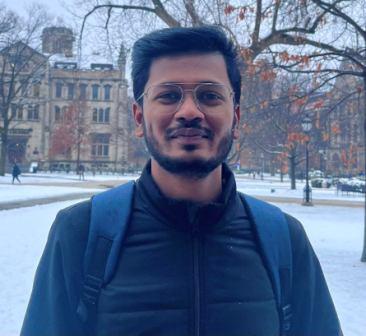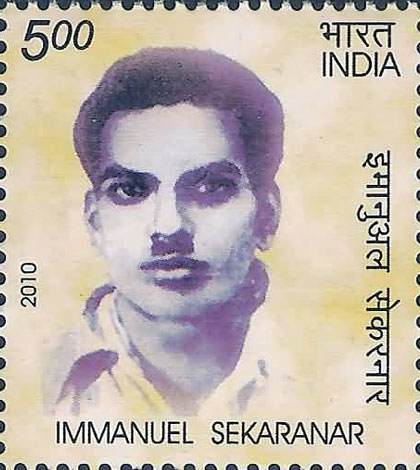Ajinkya Sanjay Khandizod
Urbanization and Slum Growth
Urbanization has exploded in Indian metropolises over the last few decades. The urbanization degree worldwide is around 57%, whereas in India, it is 34%. According to the U.N. report on World Urbanization Prospects 2018, cities’ population will double by 2050. Between 2014-2018, the slum percentage increased from 23% to 24% worldwide. It seems that as cities become more populated, the number of people living in slums grows in lockstep. The slums in India account for 17% of the urban population, as per the 2011 census.
Social and Spatial Injustice
The development and maintenance of a slum are considered a form of social and spatial injustice because it is one of the most prevalent spatial manifestations of long-term economic hardship and social exclusion. Mumbai officially accounts for 41% of the population living in slums, but it is nearly 60%. Dalits, a historically marginalized social group, are spatially marginalized in urban India, demonstrating how caste hegemony still holds sway despite the Indian State’s best efforts to free the marginalized. In Maharashtra, Dalits comprised 11.3% of the urban population and 15.7% of all slum dwellers. Dalits made up the most significant proportion of the total slum population in Punjab and Tamil Nadu, with 39.8% and 31.9%, respectively. According to the data, Dalits made up a large portion of the slum dwellers in these two states, especially in Punjab, where they made up close to half of the total slum population.
Slum Rehabilitation Scheme (SRS)
The Slum Rehabilitation Scheme (SRS) was launched in Maharashtra in 1997, aiming to provide affordable housing for slum dwellers. The Slum Redevelopment Authority (SRA) was established to carry out the plan. Any area can be designated as a slum by the SRA, and a Slum Redevelopment Scheme can be initiated there with the support of 70% of the slum dwellers. SRA is effectively given unchecked power and can annex any land to accomplish this admirable social goal. However, Mumbai’s slum redevelopment strategy has its roots in the state elections for Maharashtra in 1995. The Shiv Sena, a political party with roots in Mumbai, promised to improve the city’s beauty, increase transportation infrastructure, remove slums, and give structured homes to 4 million slum inhabitants, appealing to both urban elites and the poor.
Political and Social Dynamics
The SRS neoliberal design elements resulted from agreements involving several parties, including a well-known NGO, builders, bureaucrats, and politicians affiliated with the Shiv Sena who control state and local governments. The policy included some notable exemptions, nevertheless. The absence of the state makes it necessary for the residents of Dharavi to work hard to provide for their basic needs. The shanty town supports many small enterprises and provides cheap labor and goods for middle and large-scale industries, serving as an economic engine of Mumbai. Despite this, the general social exclusion includes cutting their water supply, electricity stresses etc add to a cumulative disadvantage, which affects the most deprived sections, especially in this context of Dalits and marginalized groups.
Case Study: Ambedkar Nagar
Ambedkar Nagar in Colaba came into the limelight when the demolition notice was served to 4000 people in 1997. This area, one of the prime locations of Mumbai, is where a prominent businessman, Ambani, wanted to have his helipad. With the demolition that happened on 23rd April 1997, no rehabilitation was given to many. The ones with no documents or proof of residence became homeless. The Ambedkar Nagar resistance went unnoticed, while the Campa Cola protests received media attention on a national scale. Residents of Campa Cola received support from opposing political parties, the mayor of Mumbai, and famous people like Lata Mangeshkar.
Insights from: “Kaala”
“Kaala” (2018), starring Rajnikanth, delves into the struggles of marginalized communities in Mumbai, particularly focusing on the slum rehabilitation program and the lives of working-castes. The movie starts with scenes where residents fight for their right to livelihood and home. It centres on the slum rehabilitation program in Mumbai and the lives of working-castes, challenging traditional portrayals and highlighting their resilience. The film not only breaks the notion that Dalits in the movie are backward and dependent on the upper caste saviour but also presents a broader urban picture. Haridev Abhayankar, also known as Hari, attempts to evict residents from their homes in Dharavi, pledging to construct modern new homes. Rajinikanth’s portrayal of Karikaalan, also known as Kaala, resists Hari’s efforts to defend his community. Kaala’s former lover Zareena returns to Dharavi to serve her people, unaware of Hari’s intentions. In a series of incidents, Hari incites trouble and threatens to bulldoze Dharavi. Kaala ensures they protest and defeat Hari’s tactics. Hari uses the police to conduct a raid and impose a curfew, but Kaala and his men resist. Ultimately, the government abandons the plan, and the “Save Slum Movement” is imitated by Kaala’s vision to safeguard their locality.
Cultural Artifacts and Urban Struggles
“Kaala” brings to light the cultural artifacts shaped by various communities in cities, some of whose voices are more vocal than others. The film challenges the neoliberal design elements of urban redevelopment and the role of NGOs, portraying the struggles of marginalized communities in an urban setting. The movie exposes the fallacy of the liberal discourse’s good intentions, showing how many initiatives to “beautify” Dharavi are just ways to gentrify the area for financial gain. An establishment representative claims 60% of Dharavi residents are criminals in a telling exchange. Despite having lived in the city for generations, they are ‘dirty’ and ‘impure’ people who cannot claim any entitlements. To maintain caste “purity,” a large portion of Indian society adheres to caste norms. In the movie, Hari Dada mocks Kaala, saying, “Your black color is so repulsive; how can you be called ‘Kaala’?” Kaala responds by stating his proud appearance and laboring identity. He responds to Hari Dada by saying that in contrast to his white clothing and “pure” surroundings, he acts in a more “impure” manner.
The film “Kaala” exemplifies urban cultural clashes. The concept of “clean” and “pure” stems from the existing social system’s structure. This hierarchical system in cities disseminates power and hegemony through the system and institutions they are a part of. Marginalized people become more vulnerable and must fight for their lives for the rest of their lives. The SRS and other processes are the media through which exploitation appears to grow, as shown in the film and reality. The film revolves around Dharavi, the biggest slum in the country. The struggles between the two powers shown in the movie have an extended historical and mythological context that fits even today. The battle between “Black and White,” the impure and pure understanding of the Hindu Scriptures. The battle between “Asuras and Devas,” the battle between “Rama and Ravana.” The powerful control land, and as a result, they also control political power. Dalits persist in being oppressed by the powerful, and in “Kaala,” people are now being made to submit to Hari’s evil schemes.”Kaala” brings to light that the working social groups sustain the city, rather than impersonal ideas of “development.” The film and reality both depict the continuous fight for survival and dignity in the face of urbanization and social inequalities.
~~~
Ajinkya Sanjay Khandizod is pursuing MA in Social Work at Tata Institute of Social Sciences, Mumbai.










